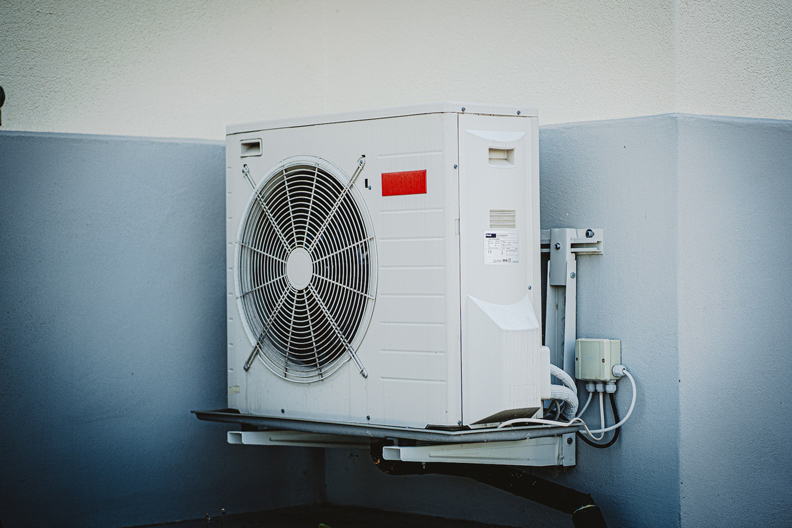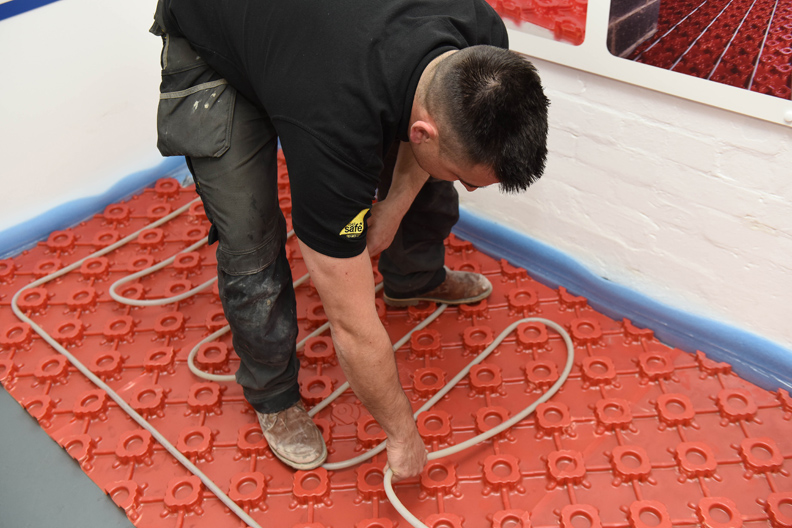Heat pump systems

If you Google low carbon heating systems, you can guarantee heat pumps will come up high on the results. With the technology being spearheaded by government as one of the answers to net zero, many people may think they are a straight-forward swap for their old gas central heating systems. But is this the reality and are they suitable for all homes and buildings?
History of heat pumps
Heat pumps have been used for decades, predominantly in the air conditioning industry. It is a proven technology, used worldwide, mainly to provide both cooling and heating in commercial and industrial properties. However the appliances have not been used widely in UK residential settings, where wet central heating systems powered by boilers are king.
In the UK domestic heating sector there are two main types of heat pump technology, air source heat pumps (ASHPs) or ground source heat pumps (GSHPs). Both absorb heat from another element (the air or ground) via a refrigeration cycle to heat your home and hot water.
How do heat pumps work?
In the simplest terms, ASHPs and GSHPs take heat from the outdoor environment, and move it to the indoor environment. In most homes, the popular choice will be an air source heat pump as they are compatible with wet central heating systems, cheaper to install and require less outdoor space. Some homes may opt for a ground source heat pump. They work particularly well with underfloor heating and warm air heating. They are also more energy efficient and ground temperatures remain stable throughout the year.
ASHP working principle: Ambient (outside) air is drawn into the heat pump by a fan, which then forces the air over a heat exchanger called an evaporator. Within the heat exchanger is a refrigerant, which is at a lower temperature than the air. Heat will always move from a hot place to a cool one, and so the refrigerant absorbs the heat from the air, and is warmed up. As the refrigerant has a low boiling point, it starts to boil and turns into a gas. This gas next passes through a compressor, which via pressure, increases the temperature further. This compressed, hot, refrigerant gas then transfers heat via another heat exchanger called a condenser, into the heating and hot water circuits of the property. The refrigerant condenses back to a liquid and passes through an expansion vessel, which reduces pressure and temperature further. The cooled refrigerant returns back to the evaporator to start the cycle again.
ASHPs work like a fridge in reverse, extracting renewable heat from the environment, and transferring it to your heating and hot water system. While it does use electricity to do this, the heat output is higher than the electricity input, (around 1kW electricity per 3-4kw of heat generated) making it a sustainable system.
The Energy Savings Trust has a very good video and further information on this process at https://energysavingtrust.org.uk/advice/air-source-heat-pumps/
GSHP working principle: The system uses long lengths of looped pipe that are buried in the ground to extract heat from the earth. It does this by absorbing low temperature heat into a thermal transfer fluid (normally a mixture of antifreeze and water) inside the pipe. This fluid is colder than ground temperature, which allows it to pick up heat from the earth.
The thermal transfer fluid then runs to a heat exchanger called an evaporator. Within the heat exchanger is a refrigerant, which is at a lower temperature than the thermal transfer fluid in the ground loop. This refrigerant absorbs the heat from the ground loop, and is warmed up. As the refrigerant has a low boiling point, it starts to boil and turns into a gas. Next it passes through a compressor, which via pressure, increases the temperature further. This compressed, hot gas then transfers heat via another heat exchanger called a condenser, into the heating and hot water circuits of the property. The refrigerant condenses back to a liquid and passes through an expansion vessel, which reduces pressure and temperature further. The cooled refrigerant returns back to the evaporator to start the cycle again.
The length of pipework needed for the ground loop depends on the size of your home and the amount of heat you need. Longer loops can draw more heat from the ground, but need more space to be buried in. If space is limited, a vertical borehole can be drilled instead. Vertical boreholes need to extract heat from much further down, typically measure 90m - 160m deep, and are more expensive to install.
GSHP’s extract renewable heat from the environment, and transfer it to your heating and hot water system. While it does use electricity to do this, the heat output is higher than the electricity input, (around 1kW of electricity per 4kw of heat generated) making it a very sustainable system.
The Energy Savings Trust has a very good video, and more information on this process at https://energysavingtrust.org.uk/advice/ground-source-heat-pumps/

Heat pumps vs boilers
Whatever type of heat pump you go for, its good to keep in mind that heat pumps have a lower heat output than a gas or oil-fired boiler. Heat pumps run at considerably lower temperatures to traditional boilers at around 50oC (55oC max). This means:
- Heat pumps perform best when they heat homes slowly and over longer periods of time, this is why both ASHPs and GSHPs are a very good fit with wet underfloor heating systems. Homes with radiators will typically need to have them oversized (replaced with larger models) to get the best from an ASHP.
- To get the best out of any heat pump system, your home will need to be well insulated. Homeowners will need to take into account any additional costs to make their homes energy efficient.
- Heat pumps won’t be as responsive as a traditional central heating system.
Additionally, not all types of heat pump will supply hot water, and the ones that do, won’t deliver hot water on demand in the same way, or to the same temperature as a combi boiler. This means that you will also need to consider how you will heat and store hot water. Usually this is provided by a hot water cylinder, which will take up additional room.
Another area where they vary is the physical installation space and area. ASHPs need to be installed outside, with enough space around it for good airflow so you will need room to either install the heat pump in your garden or attach it to the side of your building. GSHPs require a garden or suitable amount of land for installation and can be very labour intensive to install. Depending on your Local Authority and if you are in a conservation zone, you may need planning permission to install a heat pump.
Installation and costs
There is no ‘one size fits all’ cost when it comes to heat pumps, as there are many factors that affect prices. These include:
- The type of heat pump you install.
- The size of your property.
- Your hot water requirements.
- The current energy performance of your home – most houses will need improvements which could involve new loft or wall insulation, draught-proofing or even new windows and doors.
- Your current system e.g. if you already have wet underfloor heating or oversized radiators, you’ll be in an ideal position to swap to heat pump technology. If you don’t, then you’ll need to pay for additional system alterations to ensure the system works effectively and efficiently for you.
- The brand, performance and efficiency of the heat pump you choose will affect the cost.
Estimates on installation prices vary widely. As a rough guide an air-to-water ASHP installation can cost between £5,000-15,000. A GSHP installation can cost anything from £18,000-45,000. Grants are available in England and Wales to offset some of the cost via the Boiler Upgrade scheme and in Scotland via Home Energy Scotland.
The Department for Business, Energy & Industrial Strategy (BEIS) has put together a handy online tool to give you an idea if your home is suitable for a heat pump and a ballpark figure on costs. You can also check to see if you are eligible for grants to help reduce the cost of your heat pump, and find a system designer and installer.
Find out if your home is heat pump compatible.
Or search for heat pump and renewable technology engineers in your area via our find a plumbing or heating engineer online tool.
Heat pumps POSTnote publication
Currently, heat pumps are only installed in 1% of UK homes, but they could be key to reaching net zero emissions from domestic heating. The POSTnote report looks at how the technology has advanced, whether it's suitable for UK properties, government policy and more.
View full reportIs a heat pump suitable for your home?
The Department for Business, Energy & Industrial Strategy (BEIS) has put together a handy online tool to give you an idea if your home is suitable for a heat pump and a ballpark figure on costs.
Check nowDoes the CIPHE list heat pump engineers?
Yes we do and you can find one in your area via our online tool. Simply type in your postcode and filter by specialism.
Search nowPlumbing with renewables
The CIPHE is encouraging homeowners and developers to consider sustainable alternatives to traditional heating and hot water systems where possible.
View campaign